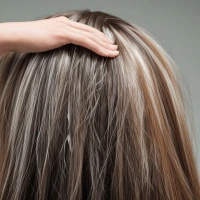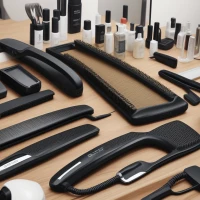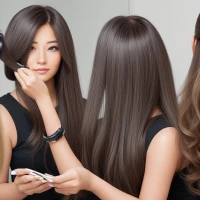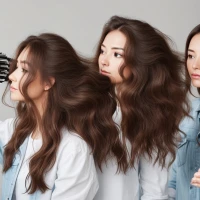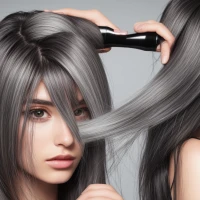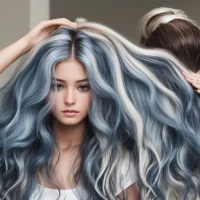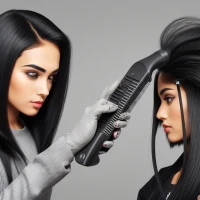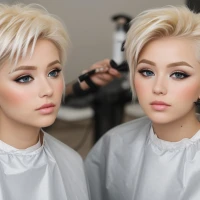In the quest for flawless hair, heating tools have become a staple in most beauty routines. From celebrities on the red carpet to everyday hair enthusiasts, the temptation to use flat irons, curling wands, and blow dryers is all too real. However, the glossy finishes and picture-perfect styles may come at a high cost to your hair’s health. As we delve into the untold risks associated with hair heating tools, it’s crucial to understand how they might be damaging your locks and what you can do to mitigate these effects.
Hair is a delicate fiber that requires gentle care to maintain its vitality and sheen. When exposed to high levels of heat, its structure can be compromised, leading to brittle strands, split ends, and a lack of moisture. While styling tools can offer instant gratification, their long-term effects could leave your hair in distress. In this exploration of hair heating tools and their potential damage, we will unravel the mysteries behind these popular devices and offer guidance on preserving the integrity of your hair.
Understanding Hair Heat Damage: The Science Behind the Sizzle
Heat styling may promise sleek finishes and bouncy curls, but at what expense? Harnessing heat to transform your hair’s texture comes with a scientific backstory of potential detrimental effects.
Related article; How To Find the Best Cosmetology Program for Your Needs
Anatomy of Hair: Knowing Your Strands
Before tackling the impact of heat, it’s essential to comprehend the composition of your hair. Each strand is made up of three layers: the cuticle, cortex, and medulla. The cuticle comprises overlapping scales that protect the inner layers, much like a protective coat. When the cuticle is lifted due to heat exposure, the hair becomes more susceptible to damage.
Related article; Conditioners and Care Tips for Curly Hair
The Effect of High Temperatures on Hair Structure
The core component of your hair – the cortex – is where damage from heat tools usually takes place. Heat alters the hydrogen bonds that give hair its shape; this is how tools can straighten or curl. Unfortunately, repeated heat styling leads to a breakdown of these bonds, leaving hair weak and easily breakable.
Related article; Most Important Skills Barbers Need To Know
Recognizing the Signs of Heat Damage
Tell-tale signs of heat damage can be easy to spot. Look for:
Related article; Soft Skills That Can Help You Rock Your Cosmetology Program
- Dryness and brittleness
- Split ends
- Frizziness
- Dullness
- Altered hair texture
If you’re noticing these symptoms more regularly, it might be time to reevaluate your use of hair heating tools.
Related article; Important Tips If You Want To Become a Salon Owner
The Unseen Effects of Heat Styling on Hair Health
While the physical signs of damage can be alarming, there are unseen effects that you should be aware of as well.
Related article; How Much Training Is Required for a Cosmetology Program?
Stripping Natural Moisture
Consistent use of heat pulls moisture from both the hair strand and scalp, leading to dehydration. Without adequate moisture, hair loses its natural luster and elasticity, becoming more prone to snapping under tension.
Related article; Why is My Hair Dry and Stiff?
Keratin Destruction and Loss of Strength
Keratin, a protein that fortifies your hair, can be degraded by high temperatures. This loss weakens the hair, diminishing its capacity to withstand future styling sessions. Over time, this can result in permanent changes to your hair’s texture and strength.
Related article; Everything You Need to Know About Acrylic Nails
Heat-Styling Techniques and Their Impact on Hair Health
Even the way you use heating tools can influence the level of damage your hair endures.
The Role of Temperature Settings
Not all heating tools are created equal, nor should they be used on the same settings. For instance, thinner hair requires a lower temperature setting than thicker hair to prevent excessive damage. Dialing up the heat without considering your hair type can lead to catastrophic outcomes for your hair’s integrity.
The Frequency of Heat Application
It’s not only about how hot but also how often. Regular application of heat can accelerate the damage process, with cumulative effects being particularly harmful. Wearing heat-styled hair daily, or multiple times a day, compounds the distress to your hair fibers.
Using Heat Without Protection
Skipping heat protectant products is akin to sunbathing without sunscreen – a surefire way to invite damage. Heat protectants can shield the hair from the most intense effects of styling tools, acting as a necessary buffer.
Steps to Combat Hair Damage from Heat Tools
All is not lost if you’re already seeing signs of hair heat damage. There are actionable steps you can take to revive your hair and shield it from future harm.
Prioritize Proper Heat Tool Usage
Understanding how to use your heat tools effectively can greatly diminish the potential damage:
- Always start with the lowest effective temperature.
- Reserve heat styling for special occasions rather than daily use.
- Use a high-quality, nourishing heat protectant before styling.
Intensive Hair Care for Damaged Strands
If your hair is already bearing the brunt of heat damage, focus on repair and rehydration methods:
- Deep conditioning treatments can restore moisture levels.
- Protein treatments can help to rebuild the compromised keratin structure.
- Regular trims will remove split ends and prevent them from traveling up the hair shaft.
Alternative Styling Methods
To break the cycle of damage, explore heat-free styling options:
- Wet setting with rollers or braids can create curls and waves without heat.
- Air-drying with hydrating products can yield a natural style with less frizz.
- Updos and creative hairstyling can conceal damage while foregoing heat.
The Long-Term Game: Protecting Your Hair’s Future
Prevention is always better than cure, especially when it comes to hair health. By incorporating the following strategies, you can defend your hair against heat styling:
- Invest in high-quality hair tools with adjustable settings and protective technologies.
- Include regular salon visits for professional treatment and assessment.
- Educate yourself on hair care and stay up to date on new methods to minimize heat usage.
Final Thoughts: Valuing Hair Health over Heat
In the grand beauty scheme, healthy hair should take precedence over temporary styling gains. By recognizing the risks and taking the necessary precautions, you can enjoy beautifully styled hair without compromising its health and vitality. Embrace a hair care routine that supports your hair’s natural state and respects its limits, and you’ll find that beauty can indeed coexist with health.
In conclusion, the use of hair heating tools can lead to significant and unspoken risks to your hair’s integrity. By understanding how heat impacts your strands, recognizing the outcomes of damage, and implementing measures to mitigate these risks, you can maintain vibrant, healthy hair for years to come. Remember, the secret to luscious locks could be as simple as turning down the heat.



